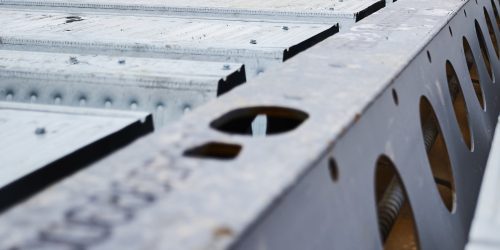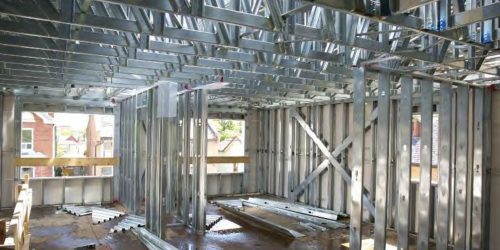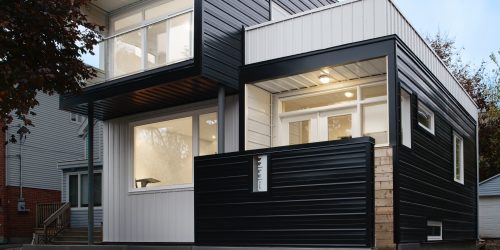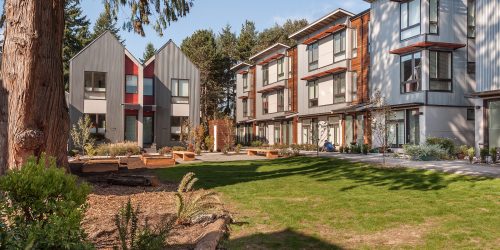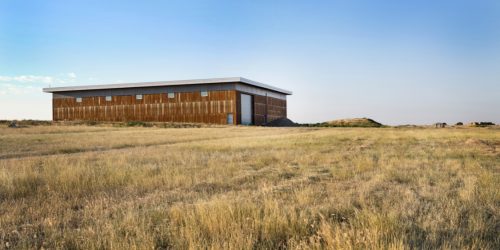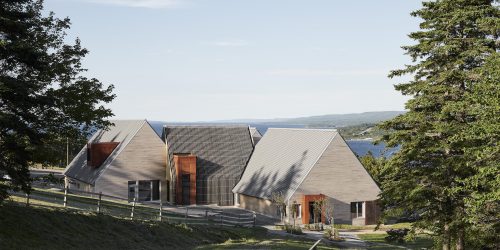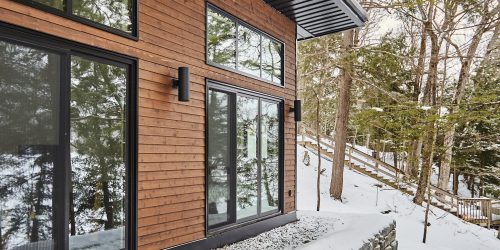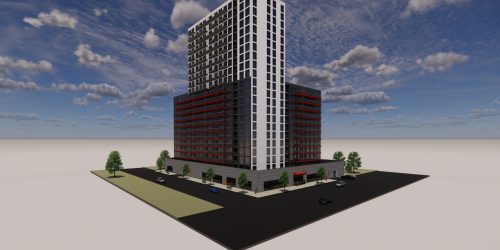Living Life to the Smallest
Teacup Tiny Homes deliver sturdy, durable homes in tiny packages, thanks to steel
Story: Ian VanDuzer
Photography: Daniel Banko
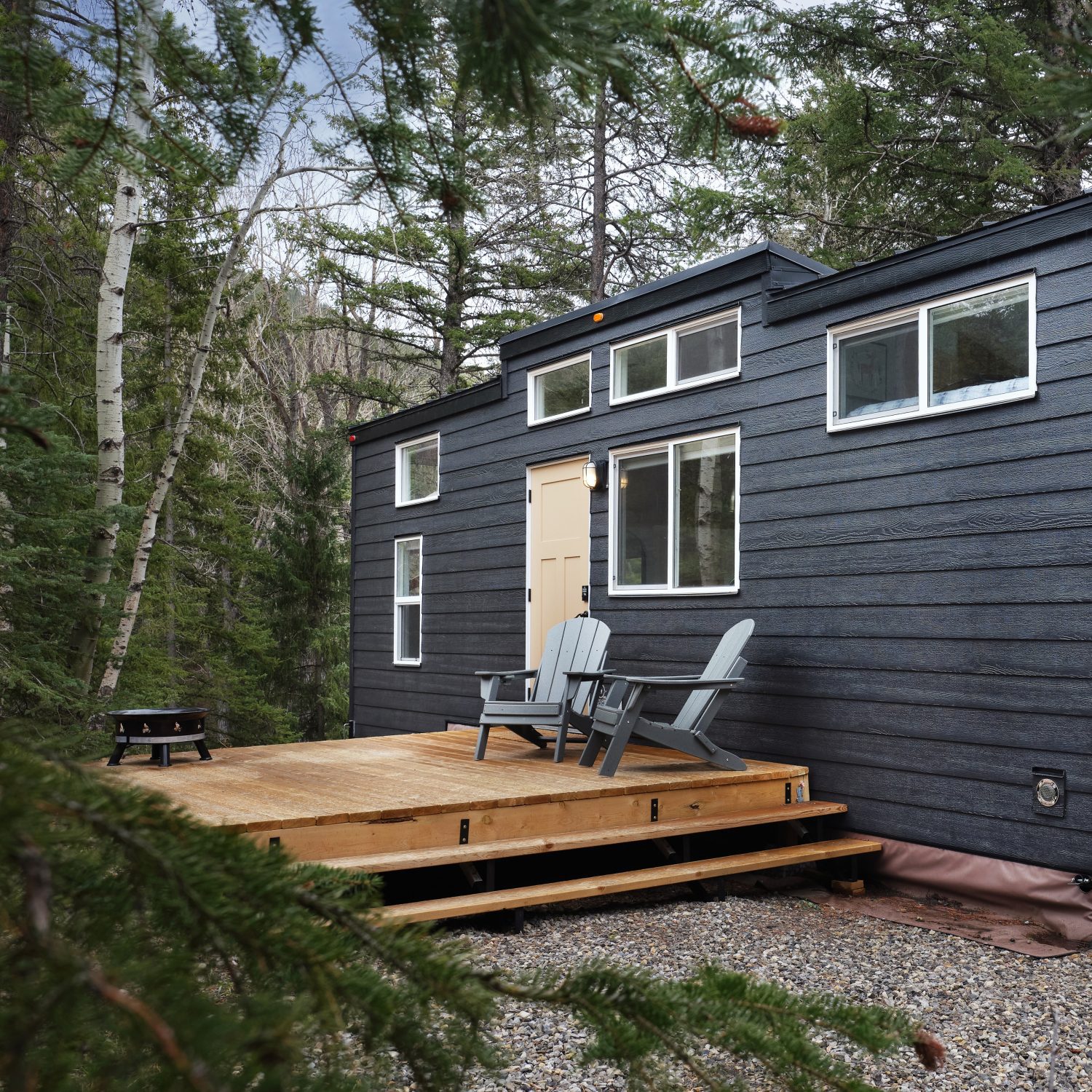
Three years ago, Lorraine Stephanyshyn was craving change. Faced with the daunting prospect of a big, empty house, with costs on the rise, the recent-retiree was looking for a dramatic shift in lifestyle. She found inspiration from her daughter. “She said, ‘Mom, you love those tiny home shows,’” Lorraine recalls. “And I just thought... yeah! I really like that idea!”
Shortly thereafter, Lorraine had put money down on her Teacup Tiny Home, which she now affectionately calls Amelia. “I left a 2,000 square foot home, and now I have something just for me that’s a quarter of the size!” Lorraine laughs. “And I would make the same decision in a heartbeat!”
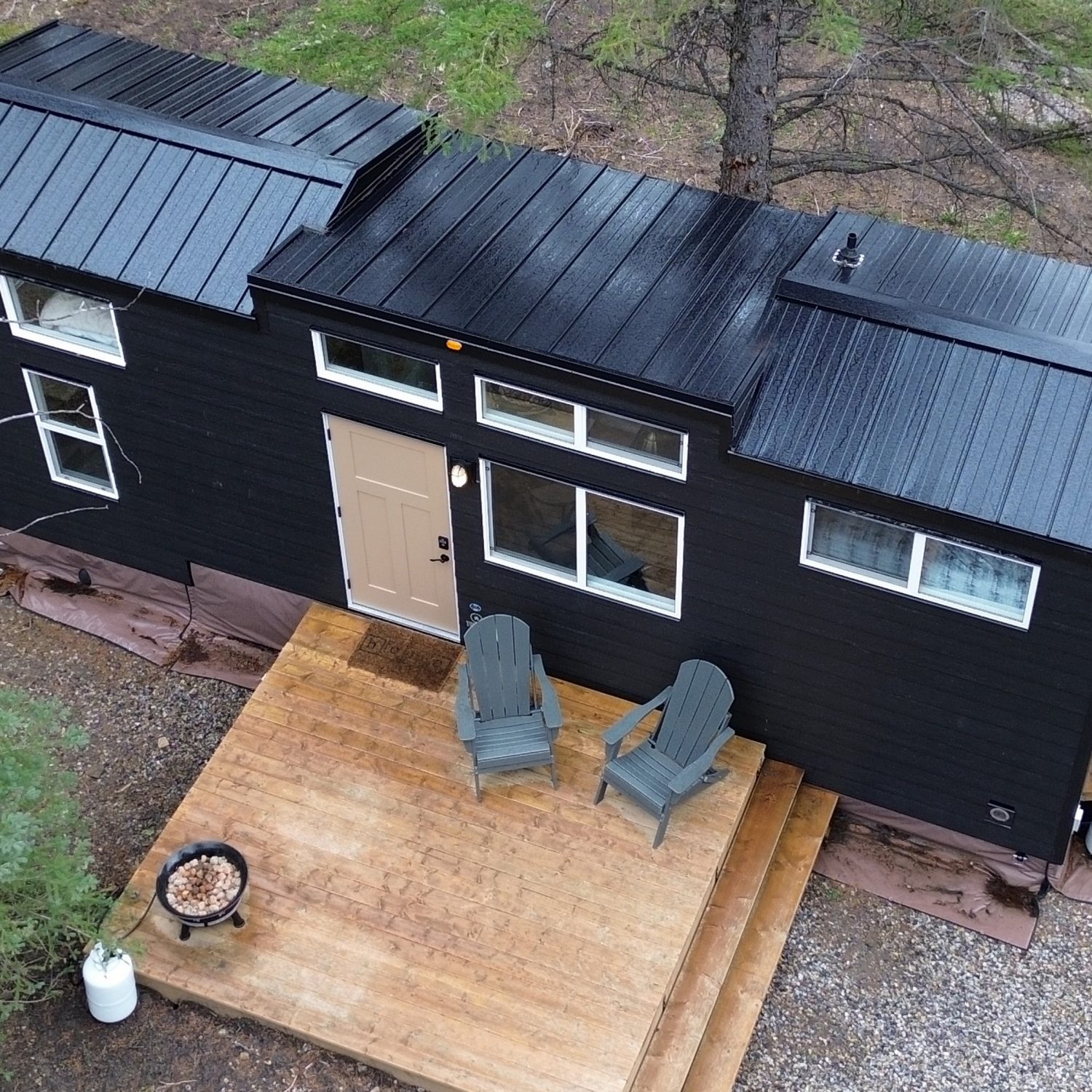
The Road Goes Ever On and On
Spurred by the popularity of lifestyle shows (like HGTV’s ‘Tiny House, Big Living’ (8 seasons), and ‘Tiny House Hunters’ (4 seasons), or Netflix’s Tiny House Nation (5 seasons)), tiny homes started popping up in the mid-2010’s. But the trend has continued, and today, there are more tiny homes being built than ever before.
“They’re sort of having a cultural moment,” says Jennifer McCarthy, founder of Teacup Tiny Homes. “But this isn’t a fad. There are great things that tiny homes do that other, bigger homes can’t.”
And while this is a newer trend – as far as architecture is concerned – tiny homes are by no means “new”. Van life – transforming Volkswagen vans into mobile living spaces – has roots in the Hippie culture of the 60’s. Houseboats bob in the canals of Amsterdam, while in Hong Kong, there are small villages of moored Sampans – fishing boats that also serve as homes. RVs can also be classified as a “tiny home” – even if they’re used more for vacation than year-round living.
What is new is this sense of a permanent, established dwelling, something made specifically for living, as opposed to needing to be converted into a home. As opposed to refurbished shipping containers – the genesis of the most-recent tiny home movement – today’s tiny homes look more like cabins than anything else. Containing themselves to 400-or-so square feet (did we mention “tiny”?) these tiny homes are made to order for living from the ground up.
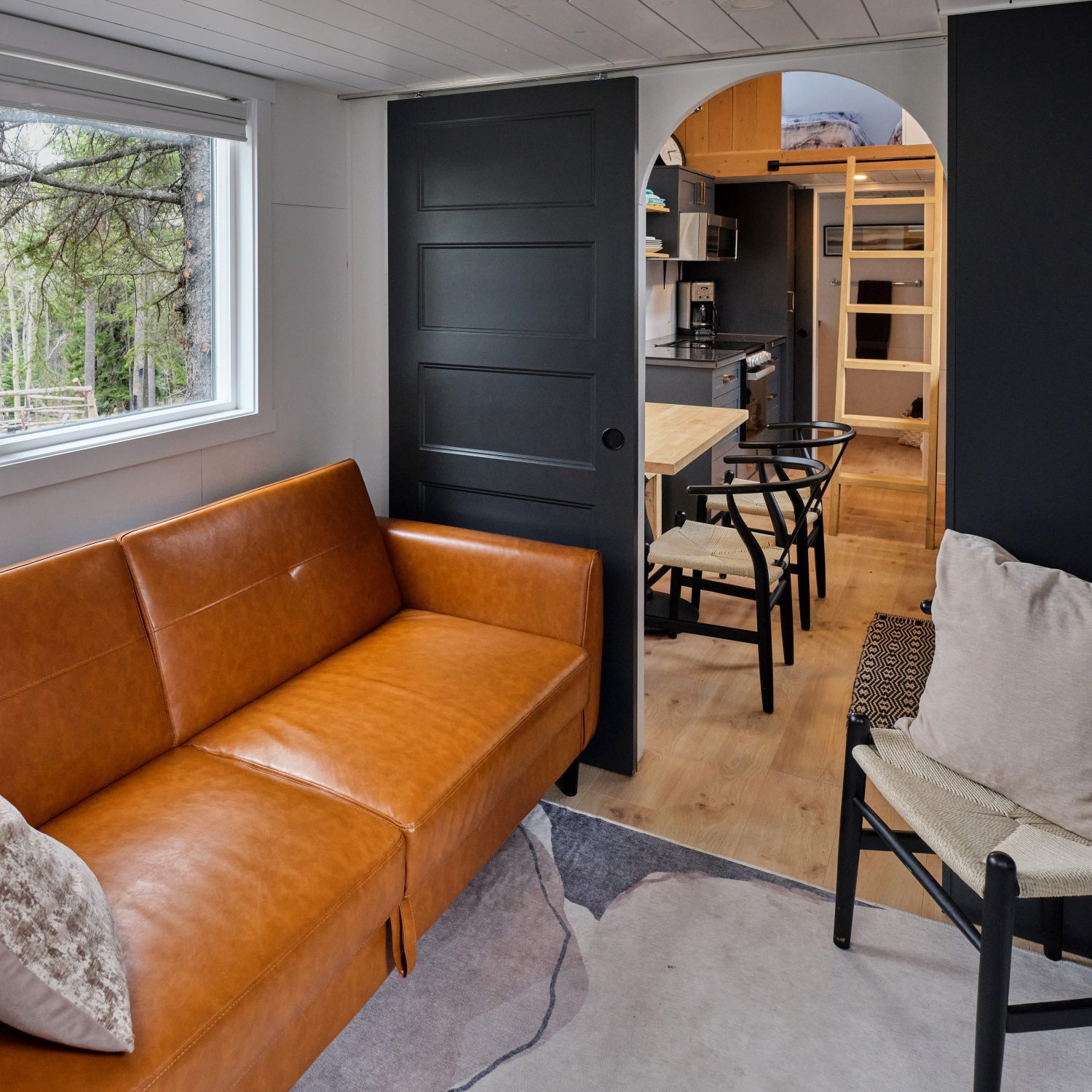
Take Me Home, Country Roads
To McCarthy, tiny homes are not just a house, a place to lay down at the end of a long day. “They represent freedom!” she says. “Tiny homes can go anywhere, whether that’s a backyard, or on the side of a mountain. Or in the downtown of a city.”
That freedom is represented by two things: the tiny size, which means that they can go anywhere, and the trailer bases most of the Teacup Tiny Homes are built on. “We want our customers to take these homes on adventures,” says McCarthy. “So, they need to be durable.”
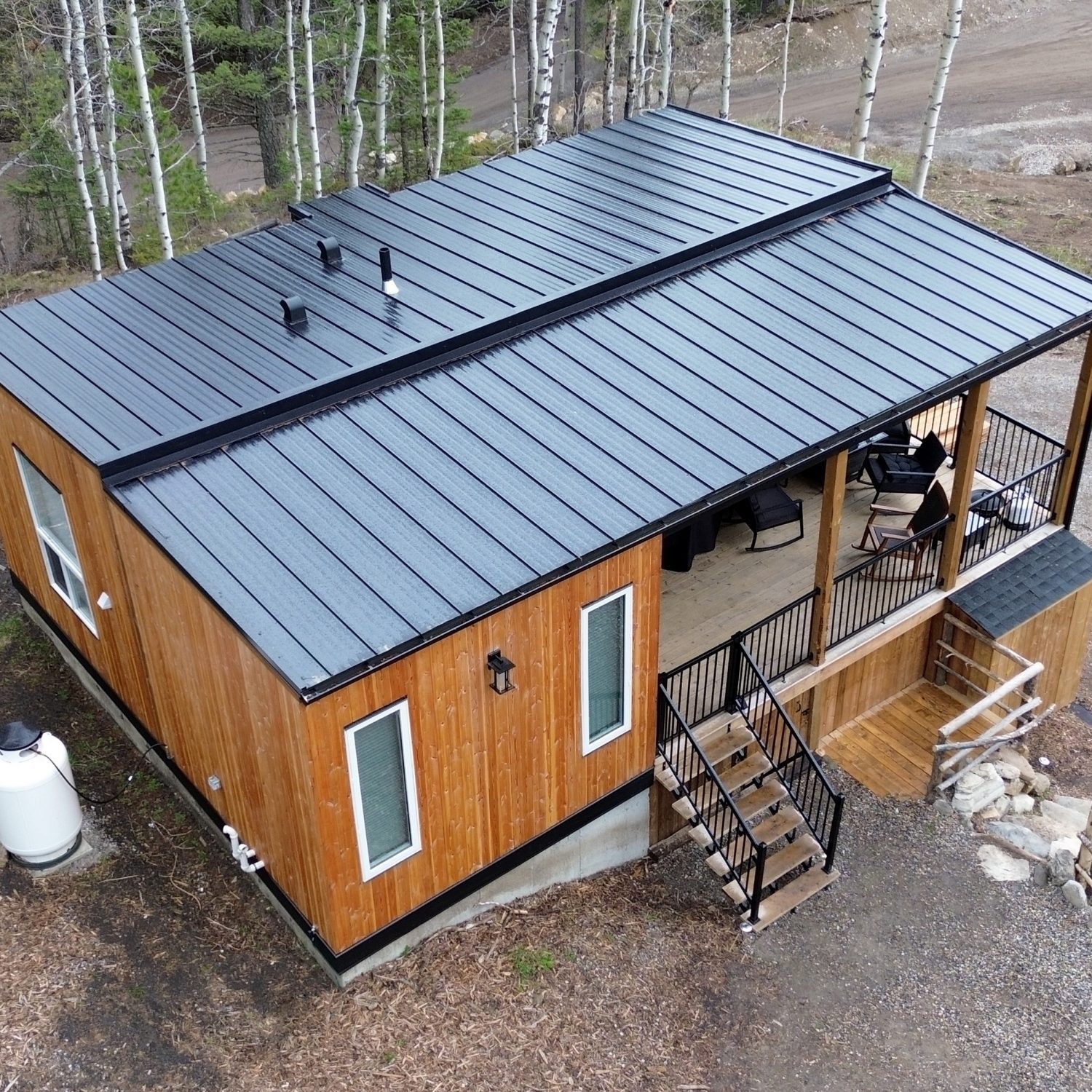
The Roof Above Our Head
The “durable” part is very important, McCarthy says. “We’re building homes,” she emphasizes. “People need to feel safe, and secure. They need to be weatherproof. They need to be able to take whatever Mother Nature throws at them.”
So, while most Teacup Tiny Homes are built like typical houses with wood framing, two parts are much hardier: the roof, and the trailer base, both of which are made with steel.
“Steel is really the foundation of our homes,” McCarthy explains. “For our trailer bases, it needs to be strong enough to support the rest of the structure. But because most of our homes are on trailer bases, we need to be aware of every pound we put on them.”
And that’s where steel roofs come in. “Metal roofs have been standard in industry and agriculture,” says Dave Jackson, a technical product specialist with Forma Steel, one of Teacup Tiny Homes’ suppliers. “But now it’s being used in these tiny homes, too.”
And steel isn’t used “just because,” Jackson says. “Up here in Alberta, we get extreme weather. We get snow, we get hail. So, there’s inherent benefits to using steel up here,” he says. “It’s less important if you’re living in the city, but if you’re living up in the Rockies, suddenly steel becomes a lot more common.”
Jackson says that most – if not all – Teacup Tiny Homes use Forma Loc panels on their roof, which hide the fasteners to make the multiple panels appear seamless. When the homes are so tiny, and the roof is much closer to passers-by, little details like this add a lot to the overall aesthetics of the house.
“When we look at what materials to use, we can do things the cheap way, or the proper way,” Jackson says. “When it’s your house, you better do things the proper way.”
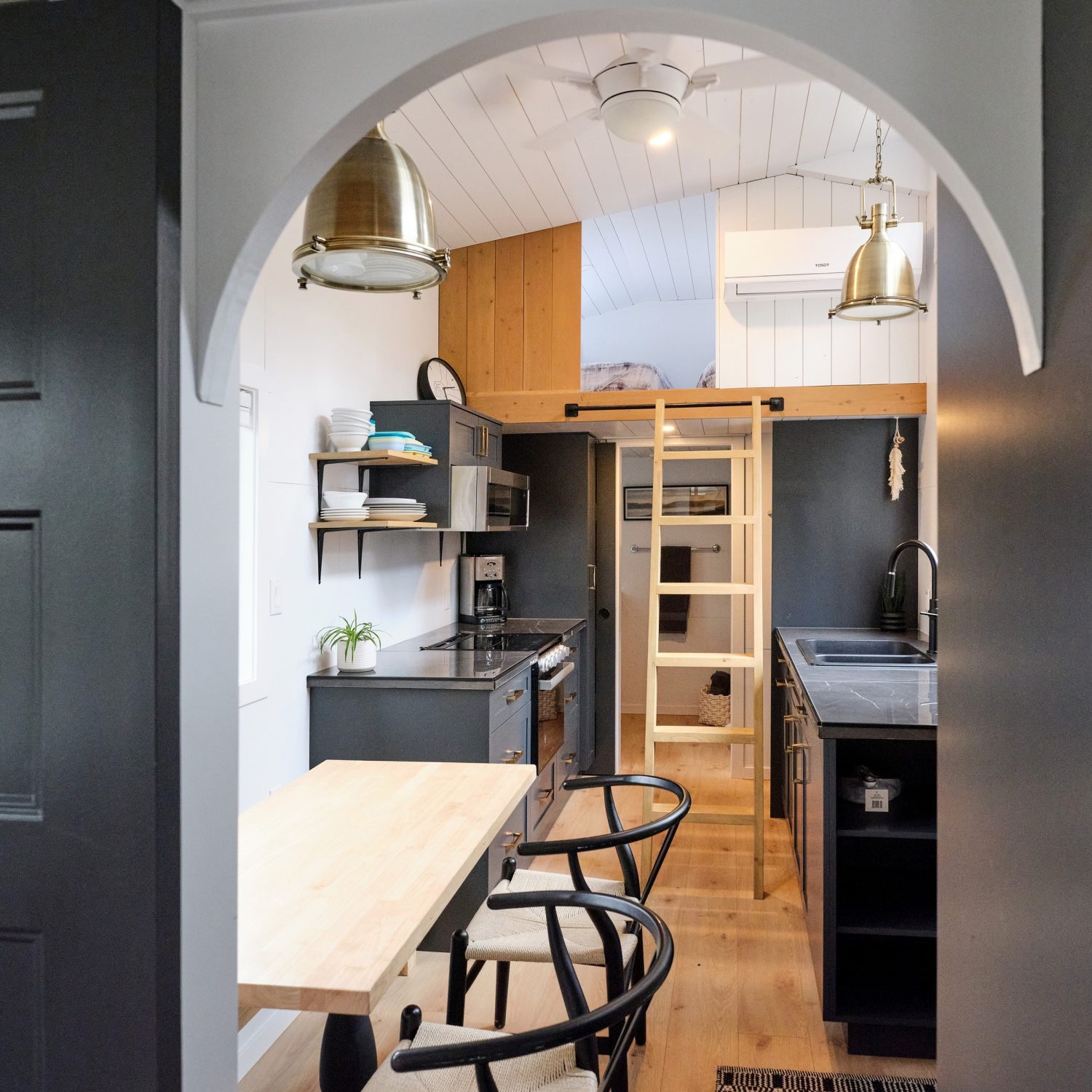
Lifestyles of the Tiny and Cozy
It was that emphasis on steel that attracted Lorraine to Teacup Tiny Homes, instead of all the other new tiny home manufacturers. “There are things they considered in construction that really made sense to me,” Lorraine explains.
Such as integrating water systems below the house, which protects them from weather and keeps them more insulated. “I just went through a winter where it was -40 degrees,” Lorraine shivers, remembering. “But nothing here froze. We just had a crazy windstorm here, and my RV neighbours were saying they could feel their whole place shake. I didn’t feel mine move at all!”
That security and stability has let Lorraine thrive in her new tiny home. “I love it, I love it, I love it!” she laughs. “I love all the light I get in here. I love being able to clean my kitchen with one swipe of a cloth. I love being able to move when I want!”
And, of course, there was the entire reason why Lorraine found tiny home living appealing in the first place. “I used to have so much stuff,” she says, shaking her head. “It just felt like there was too much, too much to clean and keep care of. This –” she says, gesturing to her tiny living room, “this is perfect.”
McCarthy says Lorraine’s story is not a unique one. “It’s not just a trendy thing, it’s a lifestyle, living minimally,” she says. “People want control over their lives, they want to have energy to do things instead of taking care of a big house.
“And tiny homes let them do that.”
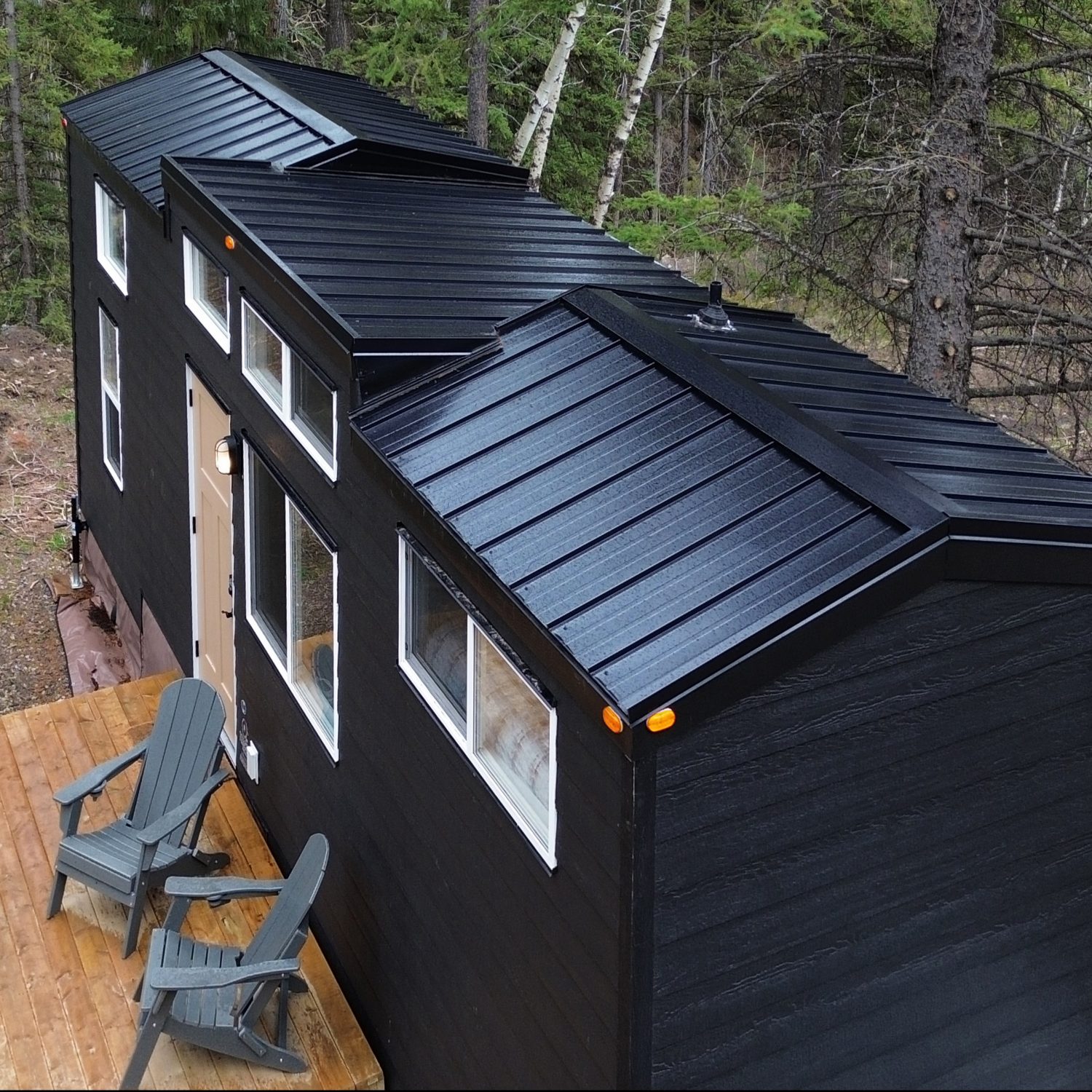
Specifications
OWNERS/DESIGNERS:
SUPPLIERS/FABRICATORS:
ROOF SYSTEM:
26ga Black in 12” Forma Loc Panel with Minor Ribs
ROOF STEEL:
ArcelorMittal Dofasco
